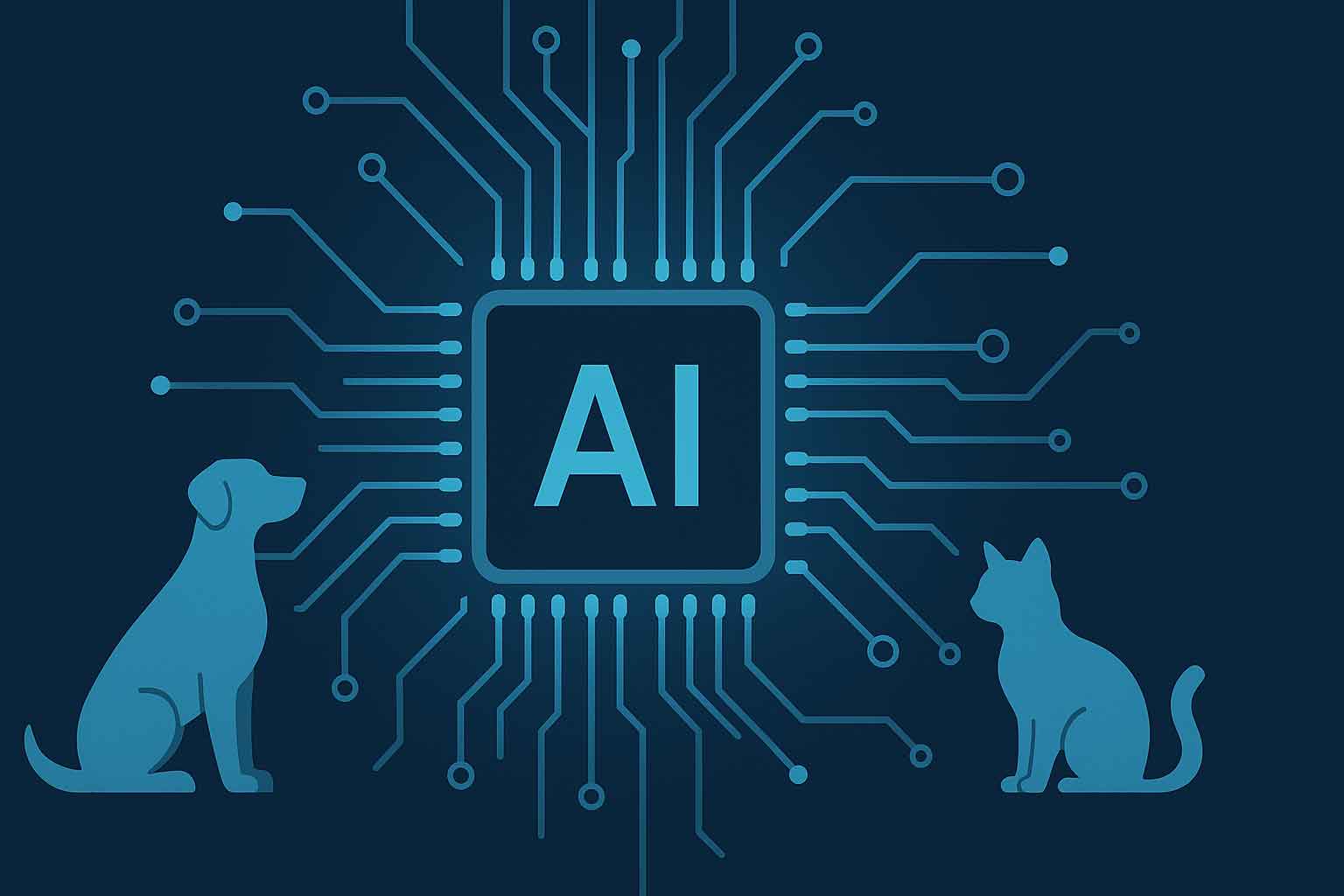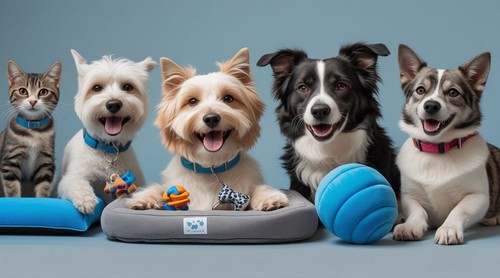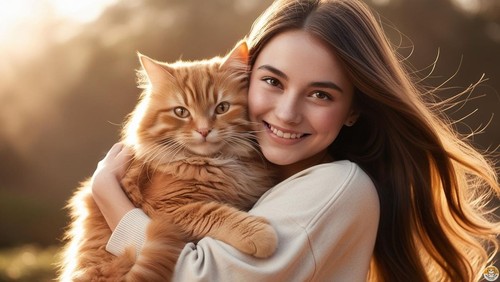
Why One-Size-Fits-All Pet Food Fails (and How AI Fixes It)
Introduction: The Pet Food Dilemma
If you’ve ever wandered through the aisles of a pet store, you know the feeling: shelves stacked high with glossy bags and cans, each claiming to be “the perfect food” for your pet. But here’s the hidden truth no two pets are the same, so no single food can be perfect for all of them.
Think of it this way: would you give the same meal plan to a marathon runner, a sedentary office worker, and a teenager still growing? Of course not. Yet that’s essentially what one-size-fits-all pet food does for our cats and dogs.
This mismatch often leads to problems like obesity, nutrient deficiencies, allergies, and digestive issues all of which can shorten your pet’s lifespan.
Thankfully, we’re entering a new era of pet care. Thanks to AI-powered pet nutrition platforms like Fammo.ai, owners now have the tools to feed pets smarter, with meal plans personalized to each animal’s breed, age, lifestyle, and health condition.
Why Generic Pet Food Doesn’t Work
Commercial pet foods are usually designed for the “average” pet. But average doesn’t exist in real life. Pets are individuals, and their needs vary dramatically.
Key Factors That Make Pets Unique
- Breed:
- Labrador retrievers are prone to obesity and need calorie control.
- Siamese cats often have sensitive stomachs.
- Age:
- Puppies/kittens need higher protein and calcium for growth.
- Senior pets require fewer calories but more joint support.
- Weight & Activity:
- A border collie running daily needs a different diet than a Shih Tzu who prefers the couch.
- Health Conditions:
- Pets with allergies, diabetes, or kidney disease need tailored diets to stay healthy.

Real-World Example: Bella vs. Max
Let’s look at two pets living in the same household:
-
Bella (Golden Retriever, 7 years old):
She’s a bit overweight, with arthritis starting in her hips. She needs low-calorie food with added glucosamine for joint health. -
Max (Tabby Cat, 2 years old):
He’s full of energy, climbing and playing nonstop. He needs high-protein food with taurine to support his active lifestyle.
Now imagine both being fed the same “general adult pet formula.” Neither will thrive. This is the core failure of one-size-fits-all feeding.
Table: Nutritional Needs That Vary
| Factor | Dogs | Cats | Why Generic Food Fails |
|---|---|---|---|
| Breed | Labs: weight control | Siamese: sensitive stomachs | Generic recipes ignore breed risks |
| Age | Puppies: high protein | Kittens: growth nutrients | Adult formulas don’t support growth or aging |
| Activity Level | Active breeds need more fat | Indoor cats need fewer carbs | Generic food can over/underfeed |
| Health Issues | Joint support, allergies | Kidney disease, taurine needs | Health-specific needs are overlooked |
How AI Changes the Game
This is where AI pet nutrition platforms like Fammo.ai’s Personalized Plans step in. Instead of guessing, AI uses data to make precise, personalized recommendations.
How It Works Step by Step
- Create a Pet Profile – Enter details like breed, weight, age, activity, and allergies.
- AI Analysis – Algorithms compare your pet’s data with thousands of nutrition guidelines and case studies.
- Personalized Plan – A tailored meal plan is generated—specific ingredients, portions, and supplements.
- Preventive Health Insights – The AI highlights risks such as obesity, nutrient gaps, or food sensitivities before they become serious.

? Internal Link: What Makes an AI Pet Nutritionist Smarter Than Google?
Case Study: How AI Helped Luna
Luna, a 5-year-old French Bulldog, was struggling with itchy skin and frequent ear infections. Her owner tried switching between multiple “grain-free” foods but saw little improvement.
After creating a profile on Fammo.ai, the AI flagged chicken as a potential allergen and suggested a novel protein diet with salmon and sweet potato. Within 6 weeks, Luna’s skin cleared up and her energy levels improved.
This isn’t magic—it’s data-driven personalization at work.
Benefits of AI-Powered Pet Nutrition
Switching from generic food to AI-driven recommendations isn’t just a trend—it’s a lifestyle upgrade.
Benefits for Pets
- Weight Management: Prevents obesity, which affects over 50% of dogs and cats (APOP Study).
- Improved Digestion: Sensitive pets get meals free from common irritants.
- Longevity: Balanced nutrition adds healthy years to a pet’s life.
- Higher Energy: Active pets receive the right calorie and protein support.
Benefits for Owners
- Peace of Mind: No more guesswork.
- Reduced Vet Bills: Prevention is cheaper than treatment.
- Smarter Choices: Owners avoid falling for marketing gimmicks on packaging.

? Internal Link: How to Compare Pet Foods Like a Nutritionist
Science Backs It Up
Veterinary studies consistently show that nutrition tailored to age, breed, and health conditions improves outcomes.
- Obesity: Overweight pets live up to 2.5 years less than lean ones.
- Allergies: Identifying allergens early prevents chronic skin and gut issues.
- Aging: Senior pets on tailored diets show improved mobility and cognition.
External authority: Cornell Vet College emphasizes nutrition as the foundation of preventive care.
? Internal Link: Should You Feed Your Cat Grain-Free? The Truth Behind the Trend
Storytelling: Owners Like You
- Maya’s Cat (Ragdoll, 4 years old): Always had stomach issues. After AI flagged lactose sensitivity, she switched to lactose-free formulas. Problem solved.
- Jake’s Dog (German Shepherd, 10 years old): Struggled with joint stiffness. AI recommended omega-3 rich foods. Within months, Jake noticed smoother walks.

? Internal Link: British Shorthair vs Ragdoll Nutrition: What Cat Owners Should Know
The Future of Pet Care
We already use AI in human health: fitness apps track calories, smartwatches monitor heart rate. Now, our pets can benefit too.
The future of pet care is:
- Data-driven diets instead of marketing-driven food.
- Preventive insights instead of reactive treatments.
- Personalized nutrition instead of generic feeding.
And the best part? This is accessible now through platforms like Fammo.ai.
FAQ: People Also Ask
Q1: Why is one-size-fits-all pet food bad?
Because pets differ by breed, age, and health. Generic diets ignore these differences, often causing health issues.
Q2: How does AI improve pet nutrition?
AI analyzes data from your pet and creates personalized meal plans that prevent obesity, allergies, and nutrient deficiencies.
Q3: Can AI help pets with allergies?
Yes, AI identifies triggers like chicken, corn, or dairy and suggests safer alternatives.
Q4: Does AI pet nutrition cost more?
Not necessarily. In fact, it often saves money long term by reducing vet bills.
Q5: How do I start with Fammo.ai?
Just sign up here, enter your pet’s profile, and get instant AI-powered recommendations.
Key Takeaways
? One-size-fits-all pet food fails because every pet is unique.
? AI pet nutrition delivers tailored, data-driven plans.
? Benefits include weight control, digestion, energy, longevity.
? Case studies prove pets thrive on personalized diets.
? The future of pet care is AI-driven and preventive.
Conclusion: The Smarter Way to Feed Your Pet
Generic diets might fill a bowl, but they don’t fill the true nutritional needs of your pet.
With AI-powered pet nutrition, you’re not just feeding your cat or dog—you’re investing in their health, happiness, and longevity.
? Try it today: Sign up on Fammo.ai and discover what personalized nutrition can do for your furry family member.
Comments
Useful thank you
Useful thank you
Tnx